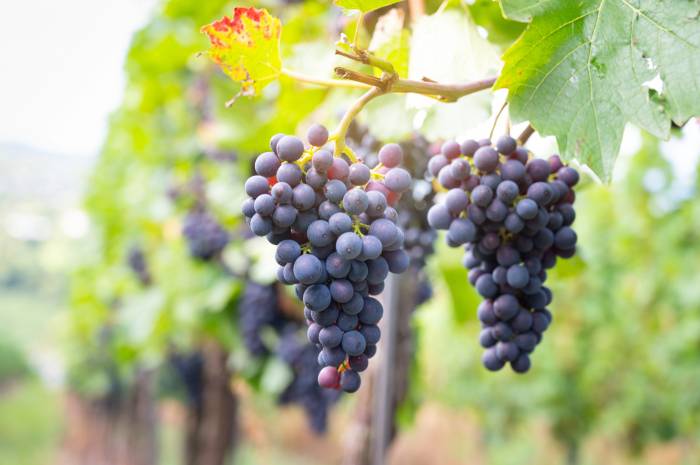Artificial Intelligence Model Enhances Grape Growth Predictions for Vineyards
Washington State University researchers develop hybrid approach to improve accuracy and reliability of grapevine phenology forecasts for growers.
2025-09-09

Researchers at Washington State University have developed a new method for predicting grapevine growth stages, aiming to help vineyard managers make better decisions about irrigation, fertilization, and harvest timing. The study, led by William Solow and Sandhya Saisubramanian, introduces a hybrid modeling approach that combines deep learning with traditional biophysical models to improve the accuracy of grape phenology predictions.
Grape phenology refers to the timing of key developmental stages in grapevines, such as bud break, bloom, and veraison (the onset of ripening). Accurate forecasts of these stages are crucial for vineyard operations. Mistimed interventions can reduce yield and quality or harm vine health. However, predicting these stages is challenging due to limited historical data for each grape variety and the complex relationship between weather conditions and plant development.
Traditionally, growers have relied on biophysical models like the Growing Degree Day (GDD) model, which uses accumulated heat units to estimate when phenological events will occur. While widely used, the GDD model only considers temperature and often lacks the precision needed for modern vineyard management. Deep learning methods have shown promise in modeling more complex relationships using additional weather data, but their effectiveness is limited by the scarcity of detailed phenology records for many grape varieties.
The new approach proposed by Solow and Saisubramanian addresses these limitations by using a multi-task learning framework. This method allows a recurrent neural network to learn from multiple grape cultivars at once while preserving the biological structure of plant development. The neural network predicts daily parameters for the GDD model based on a broader set of weather features, including solar radiation and rainfall. This dynamic parameterization enables the model to adapt to changing conditions throughout the growing season.
To test their method, the researchers used both real-world and synthetic datasets. The real-world data came from 32 grape cultivars monitored at Washington State University’s Irrigated Agriculture Research and Extension Center in Prosser, Washington. These records span more than three decades and include daily observations of phenological stages and cold-hardiness during dormancy. Synthetic datasets were generated using established crop models and historical weather data from several U.S. states.
The team compared their hybrid model—called Dynamic Model Calibration with Multi-Task Learning (DMC-MTL)—against several baselines: traditional biophysical models, standard deep learning approaches, hybrid models that only partially integrate deep learning with biophysical models, and physics-informed neural networks. They evaluated each method’s accuracy in predicting seasonal phenology, cold-hardiness, and wheat yield under various weather scenarios.
Results showed that DMC-MTL significantly outperformed traditional GDD models, reducing prediction errors by more than half across all grape cultivars tested. The new model also produced more biologically consistent predictions than standard deep learning methods. For example, it avoided impossible sequences such as predicting bud break after bloom or returning to dormancy after growth had begun—errors that can occur with purely data-driven approaches.
The researchers also found that DMC-MTL was robust when tested on data from regions with different weather patterns than those used for training. While other deep learning models saw large increases in error when applied outside their training region, DMC-MTL maintained relatively stable performance. This suggests it could be useful for vineyards in areas with limited historical data or facing unusual climate events.
Another advantage of the multi-task approach was its ability to leverage sparse data across many cultivars without simply aggregating them—a process that can obscure important differences between varieties. By embedding cultivar-specific information into the neural network’s architecture, DMC-MTL improved per-cultivar accuracy while still benefiting from shared learning.
The study also examined how well the model performed at each individual phenological stage. DMC-MTL minimized errors not just overall but also at critical points like bud break and bloom—key moments for scheduling vineyard tasks. The researchers assessed how many cultivars fell below various error thresholds relevant to growers’ needs; at a 10-day error tolerance, 90% of cultivars were accurately predicted by DMC-MTL compared to 80% for the next best alternative.
Interpretability is another benefit highlighted by the authors. Because DMC-MTL predicts parameters for an established biophysical model rather than making opaque predictions, agronomists can better understand how weather factors influence outcomes—a feature valued in agricultural decision-making.
Deployment of this new modeling approach is planned for later this year on a digital platform used by growers (the specific platform was not disclosed). The research team is also exploring ways to further improve real-time calibration and uncertainty quantification in crop state predictions.
This work was supported by funding from USDA NIFA through the AgAID AI Institute and benefited from long-term collaboration with Dr. Markus Keller’s laboratory at Washington State University.
The findings represent a step forward in applying artificial intelligence to agriculture, offering practical tools for growers facing increasingly variable climate conditions and demanding production goals.
Founded in 2007, Vinetur® is a registered trademark of VGSC S.L. with a long history in the wine industry.
VGSC, S.L. with VAT number B70255591 is a spanish company legally registered in the Commercial Register of the city of Santiago de Compostela, with registration number: Bulletin 181, Reference 356049 in Volume 13, Page 107, Section 6, Sheet 45028, Entry 2.
Email: [email protected]
Headquarters and offices located in Vilagarcia de Arousa, Spain.